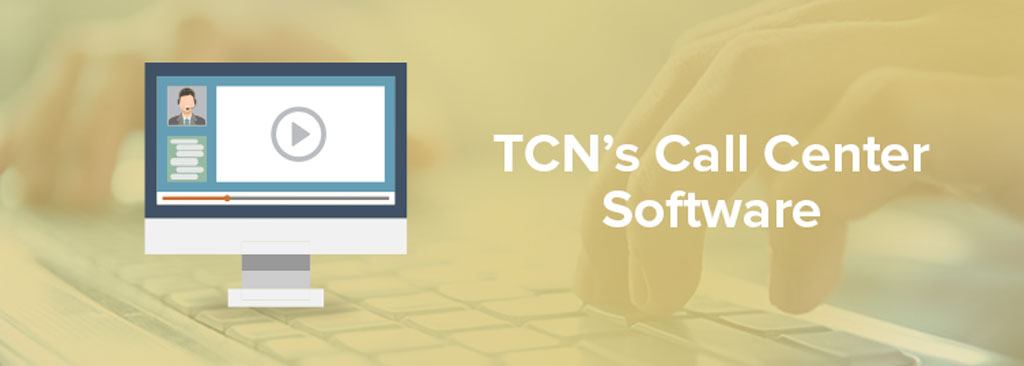5 Ways to Improve Agent Performance with Inbound Call Center Software

If agents aren’t performing well, neither is the call center. But agents can’t do all the work on their own. Check out the many ways inbound call center software improves agent performance through top-notch tech.
5 Ways to Improve Agent Performance Using Inbound Call Center Software
Agent performance doesn’t solely depend on the agents themselves and their training. Technology plays a large role in whether or not agents are performing at their peak.
Below we list 5 ways inbound call center software helps agents be more productive and serve their customers better.
1. Measure Agent KPIs
If call centers don’t measure agent KPIs, then there’s no way for managers to improve agent performance. And without technology that captures call center metrics, managers won’t have KPIs to measure.
That’s why analytics and reporting is key to better agent performance. It shows managers and agents the most important areas to focus on and provides meaningful data to help everyone achieve their goals.
Here are some metrics you should track:
- First call resolution (FCR).
- Customer satisfaction rating.
- Hold times.
- Average answer speed.
- Average handle time.
- Number of waiting calls and active calls.
2. Help Agents Succeed in Real-Time
With the right inbound call center software, managers can assist agents in real-time and provide a variety of tools to help them get the job done efficiently.
For example, Agent Gateway is a central hub of knowledge and resources agents can use before, during, and after calls.
Call centers don’t have to rely on agents who already know how to achieve first call resolution, they can give them a step-by-step breakdown of how to achieve it and display those steps on the agent’s computer when talking to customers.
Many call centers are worried about TCPA compliance right now, but with Agent Gateway, agents are prompted to say or do specific things to maintain compliance. Again, in real-time.
Here’s a list of many other ways software like this helps agents do their job better:
-
- Provides a note-taking interface for recording in-call replies and remarks.
- Documents action steps taken.
- Supplies scripts and responses for agents at any experience level.
- Allows agents and managers to direct message one another.
- Gives permission to managers to “barge-in” in on a call in case an agent is losing a customer.
- And displays a timer so agents know how long they’ve been on a call to keep it running smoothly.
3. Monitor Customer Conversations in Real-Time
Call centers can glean many insights from looking at the transcripts of calls. By using software like Speech Analytics, they can make those insights actionable.
This type of technology delivers full-text transcripts for each call, but it does much more than that. As the name suggests, it analyzes the text and pulls out key words and phrases that can help agents in the future achieve first call resolution.
It also:
- Reduces call centers’ legal risk through automatic PCI-redaction of sensitive information.
- Provides easy-to-use search and discovery tools.
- Enables tagging and commenting on any parts of the transcript.
- Integrates with most CRMs.
4. Skills-Based Routing
There are many ways call centers can choose to route calls. They could do it on a first-come, first-serve basis. But if inexperienced agents start talking to difficult callers, they could end up losing customers.
A better way to transfer calls and resolve caller issues quickly is through skills-based routing. This is made possible through automatic call distribution (ACD).
How it works is simple:
ACD technology analyzes inbound calls and looks at the caller’s information, past notes about the caller, past issues resolved (or unresolved), and decides which agent to transfer the call to based on this data.
ACD tech works with in-house call centers reps and outsourced call center reps.
But this inbound call center software does much more than just transfer calls. It also provides customers with the option of waiting for a callback instead of waiting on hold. This is significant since “three-quarters of respondents stated that offering the [callback] option is Very or Somewhat Important,” according to the contact center satisfaction index 2016.
It can also be customized to play certain waiting music, deliver promotions, and estimated wait time notifications.
5. Advanced Speech IVR
Improving Agent Performance Beyond Inbound Software
Better inbound call center software is only one piece of the puzzle when it comes to helping agents improve performance.
Another piece is better dialing software.
Unfortunately, many call center managers don’t know what’s better: “leasing” a hosted dialer vs. “buying” an on-premise solution. Or how their strategy changes with a hosted solution. Plus, they may not have undertaken a 5-year analysis.
Luckily for those managers, we cover all of that and more in this free whitepaper which you can download immediately to get the maximum ROI from your dialer today.